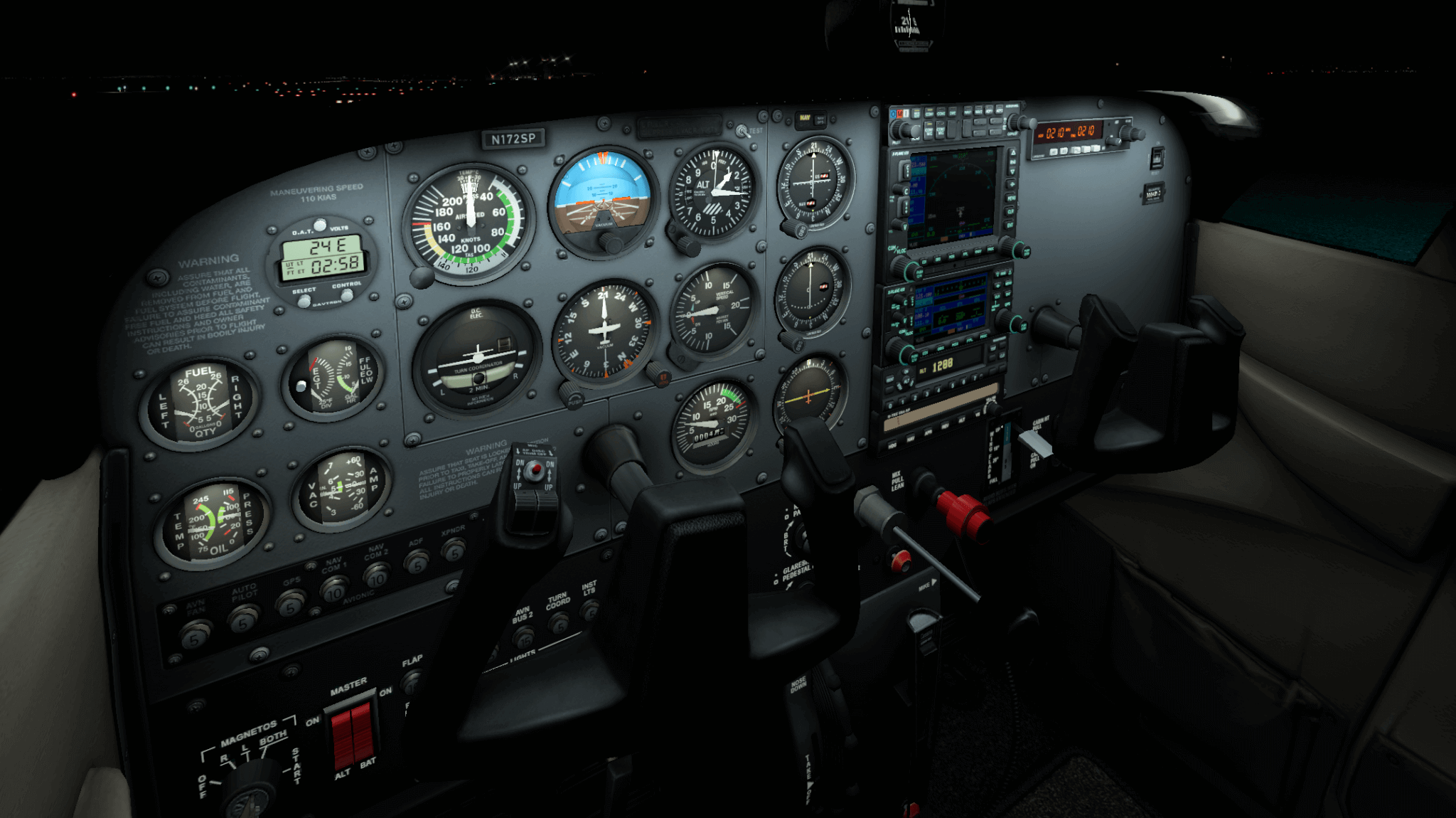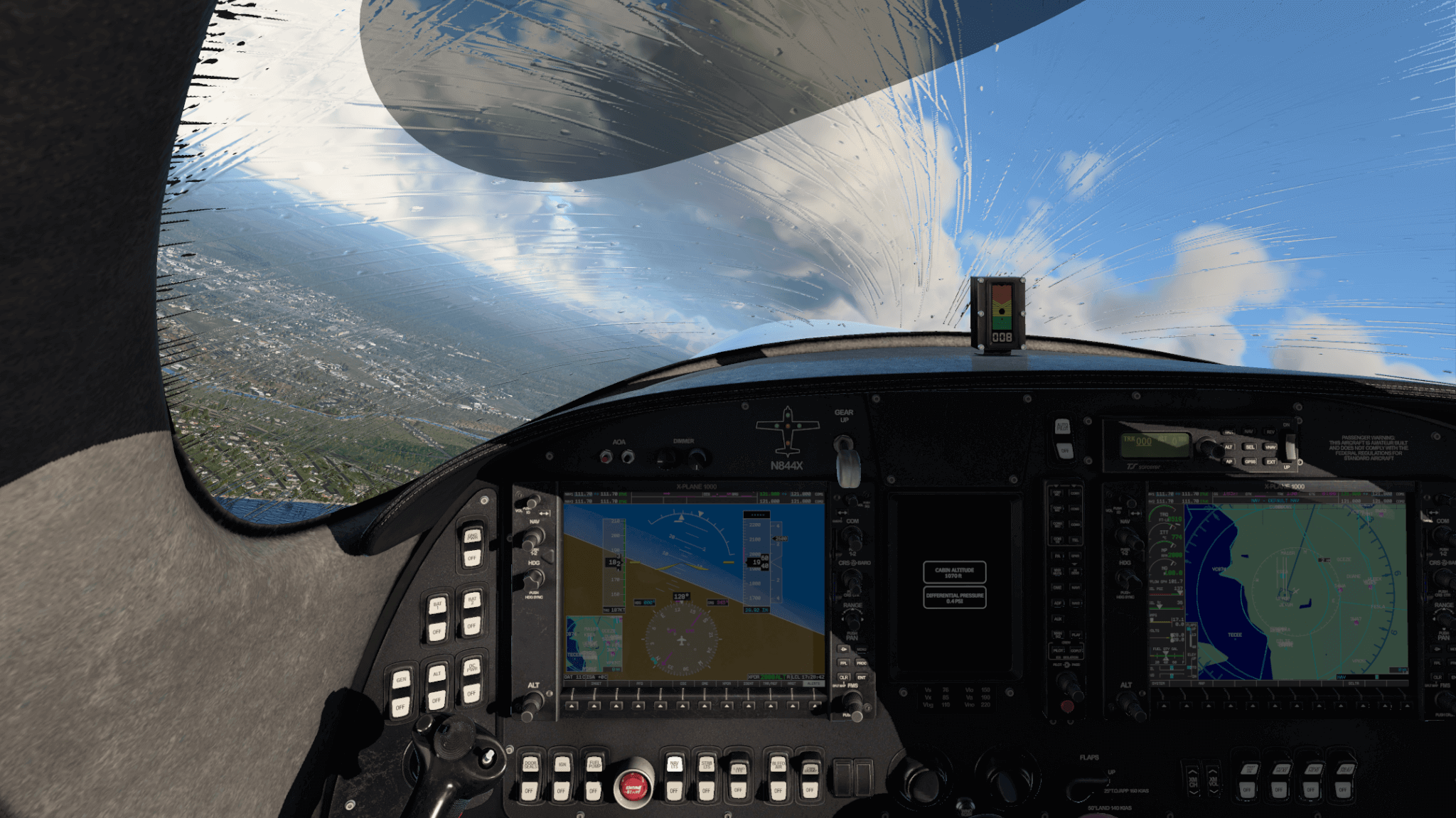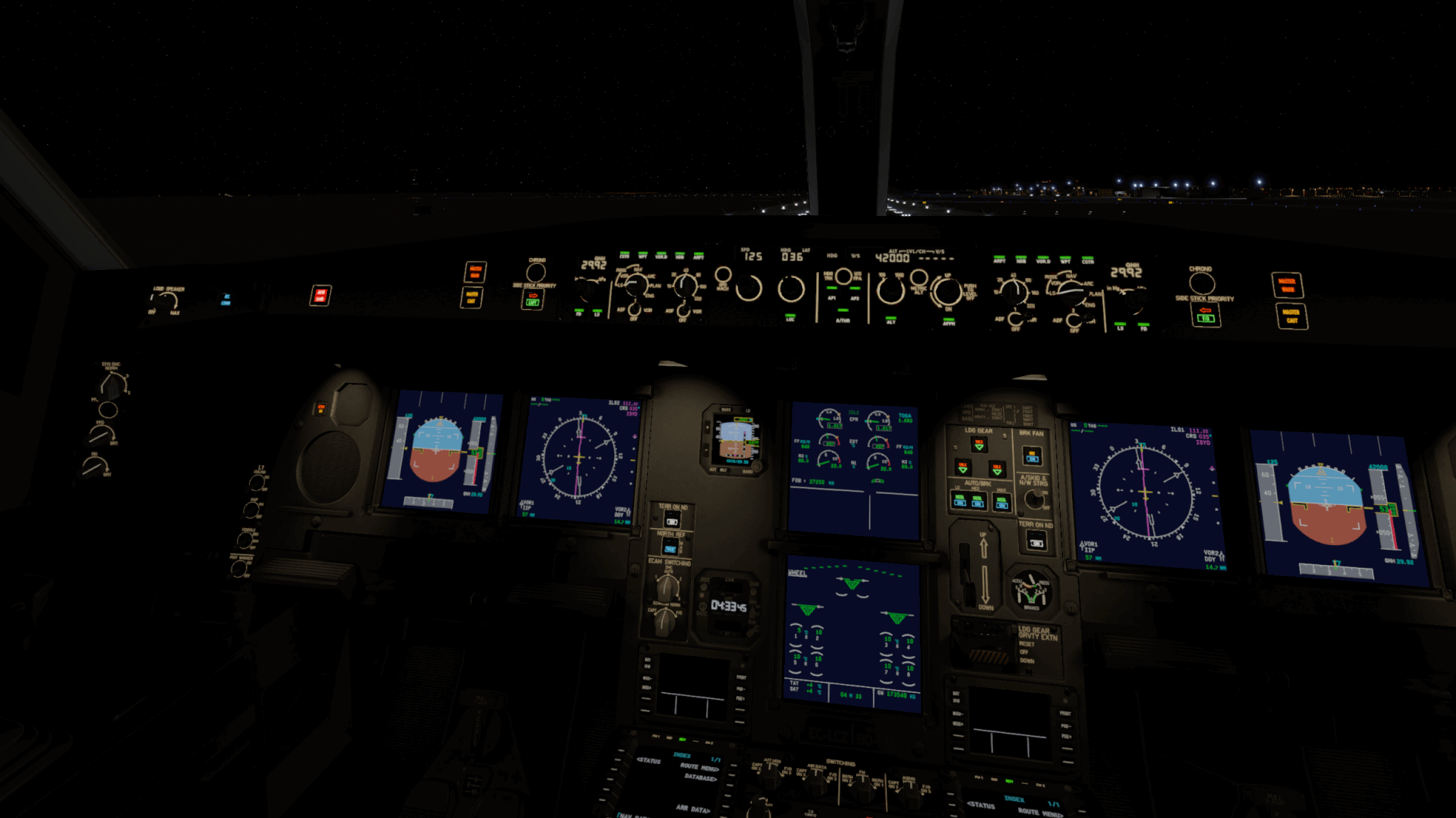Photometric Lighting – What is it and why do we need it?
What Is a Photometric Renderer?
Simply put, a photometric renderer is one that tries to create realism by using actual real world light levels (specified in real physical units) in its internal calculations. In other words, we render the world as it is.
A decade ago, the image of the world you saw through your simulator was essentially built out of pre-made images drawn in Photoshop by artists. These images were drawn as realistically as possible, but they were low dynamic range (LDR) because that’s all the monitor could handle. The sky was as blue as the art director decided, and then created with Photoshop. This worked great in its time, but with today’s modern graphics cards we can do much better.

First We Have to Go Higher
A traditional low dynamic range (LDR) renderer has colors in a range from 0 to 255, but if we want to model the real world, we’re going to need some much bigger numbers. We measure luminance in candela per meter squared (cd/m^2) or “nits” (nt). Here’s a Wikipedia chart listing the luminance of a wide variety of stuff. A few examples:
- Flood lights on buildings at night – 2 nts.
- An old crappy LDR monitor – 80 nts.
- A nice newer LCD monitor – 500 nts.
- The clear sky – 7000 nts.
- Clouds – 10,000 nts.
- The sun at sunset – 600,000 nts
- The sun at noon – 1,600,000,000 nts.
(That last one is why your mother told you not to stare at the sun.)
Note how wide the range of numbers are: daytime images are made up of things in the “thousands” of nts, but with a wide range of variation, while night ones might be single digits.
So to be more realistic, the sim needed to render using bigger numbers. X-Plane 12’s rendering pipeline is entirely HDR, from start to finish, using 16-bit floating point encoding to hold a much wider dynamic range of luminance.

You Can Stare at the Sun in X-Plane
Obviously you can look at the sun in X-Plane on your LCD monitor and not suffer direct eye damage – the peak brightness of your monitor might be 100-500 nts. How do we show a scene with 10x the brightness of a monitor, or more? To solve this, we needed to model a real camera to serve as your “eyes” in the simulator. This camera in X-Plane sets an exposure value that maps our HDR scene to your monitor.
The dynamic range of computer monitors isn’t very large, though. To address that, we applied a tone mapper to the exposed image. The tone mapper is a tool that “squishes” some of the bright areas of the image so that we can fit a wider range of bright colors onto the screen at the same time. The tone mapper can give the simulated scene a look that’s more like an image from a film camera, rather than a cheap shoddy digital camera. Using the tone mapper, our art directors tuned the parameters of X-Plane’s camera to make our scene look brilliant and realistic, given the constraints of computer monitors.
The exposure levels in X-Plane 12 are set by our art team according to time and weather conditions. They are also modulated by auto-exposure, so that as you look around the scene the camera becomes more sensitive in dark areas (to help read panels) and less sensitive in bright areas (to avoid being blinded).

A Physical Sky
Now that the sim had a rendering that accurately modeled the real world, a sky that was painted by our art team using Photoshop just wouldn’t work. It needed a new sky that would match the light values (nits) of the real sky.
To do this, we calculated the light levels of the sky by considering the composition of the atmosphere, the viewing angle, and the brightness of the sun. The sky is blue for a reason (oxygen molecules) and we get a blue sky by simulating that scattering effect.
This math for the sky works when looking in any direction from any location, so we not only get a blue sky, but we get the correct “blue-ish” tint when looking at the ground from the air, and this matches the sky without the artists trying to hand-paint two effects to match.

Lighting It Up
To create a photometric world in X-Plane, we needed light sources in the sim to be specified in real-world units. X-Plane comes pre-programmed with the brightness of the sun, but how bright is that LCD screen in your glass cockpit? In X-Plane 12, aircraft designers specify these values in real world units.
One of the advantages of this real world approach is that the “right” value for setting up an aircraft can come from the real specifications of the aircraft, rather than tuning some numbers in a 3D editor until it looks right.

Harmonized Results
One of the big advantages of this approach is that all of the elements that make up the sim play well together because they are all calibrated to the same standard – the real world. How bright are landing lights compared to the airport lights? How visible are the taxi lights when the sun comes out? With a photometric rendering engine, the answers are determined mathematically and by measurements that can be checked against real life, so the entire scene fits together.
With photometric rendering, we’ve taken another step closer to real life – the new X-Plane 12 renderer simultaneously produces realistic images and is more straightforward to work with, all thanks to its use of real-world values as inputs. Check out the video below for an A/B comparison between the lighting in X-Plane 11 and X-Plane 12.